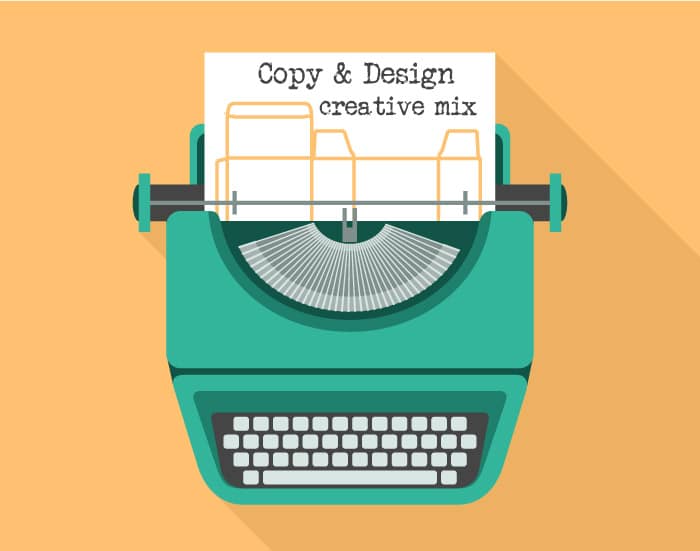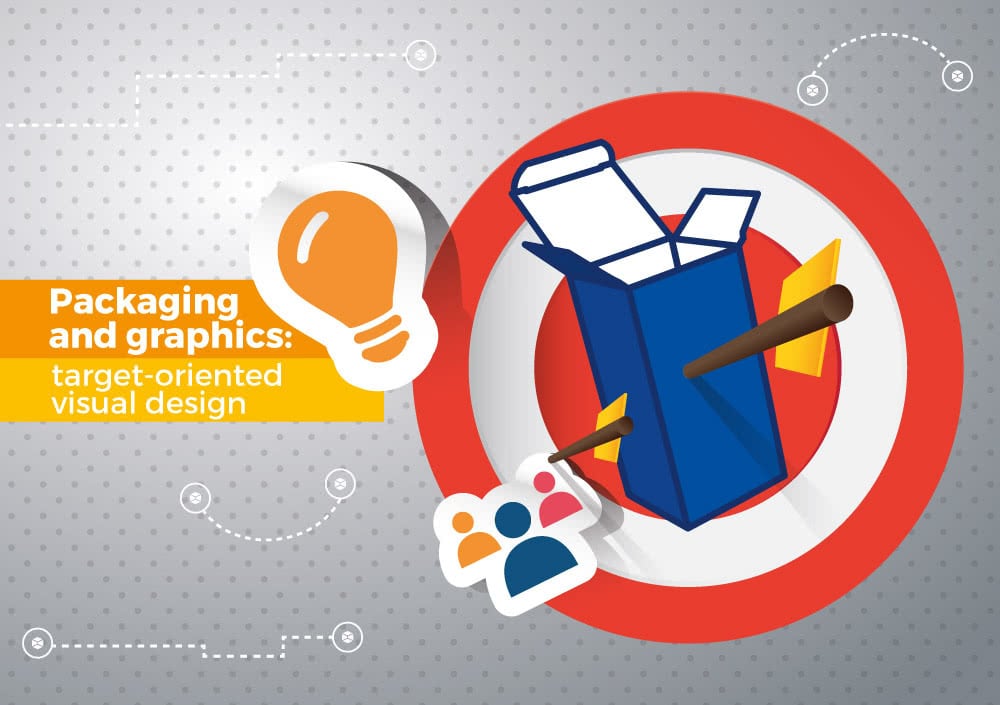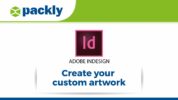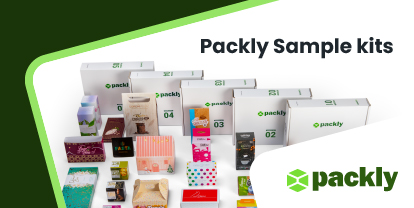In an era where mass customization is growing more and more, target-oriented visual design is increasingly becoming essential. To design contents able to catch customers attention and effectively communicate your own message is not so easy.
Accurate studies are needed to obtain an effective communication, both for copywriting and visual design. Only by knowing your target audience you can choose the appropriate language and graphic style. It is important to identify the right approach able to seduce your clients and lead them to purchase. To create a generic and multi-target product in the mass customization era, if not strictly needed, might be anachronistic. Before designing the graphics of your packagings you might identify all the peculiarities and needs of your typical customers to create a self-respecting target-oriented visual design.
Personas

Firstly you might define your personas. What are they? Imaginary people, part of a specific customers group, with a real profile. A kind of identikit of your ideal client created as a result of research, direct observations and statistical data analysis. The union of the individual characterizing traits and of the ones common to the whole category. By defining your personas you will then obtain the complete profile of your user: ethno-demographic characteristics, behaviors, habits, needs and expectations. Starting from them you will be able to easily create your target-oriented visual design concept and make the right stylistic choice.
In this article you may find some useful information for the graphic design and copywriting of your custom packaging. Remember: you might always refer to your target even during the previous project phases. For example: the type of package should always suit your clients needs and psychomotor skills.
Let’s begin!
A funny couple
In every self-respecting visual design project, copywriting and graphic design go hand in hand. They are two sides of the same coin. Starting from here, when I will refer to them it will be always related to packaging design.

Copywriting and Graphic Design
Copywriting is the act of writing persuasive contents aimed to “conversion”. These are therefore texts that lead observers to make a specific action, the conversion. Whilst graphic design is the design and organization of the graphic layout of product. It consists in the choice of fonts, illustrations, covers, etc.
Target-oriented copy
Normally each consumers group prefers or is simply more accustomed to a certain linguistic register. While drafting the copy you have to pay a particular attention to the educational level and to the language skills of your target. Doing that will allow you to define the most appropriate writing tone and style to properly communicate your message. In this way the recipients might easily understand you.
The most important thing is to know what to say. Your message should certainly includes all the uniqueness and strengths of the product/service. You may have a look at your competitors copies and compare the different linguistic registers and information. Once researches are done it is time to write, write and write. Create unique contents and talk directly to your customers. Remember: you are selling a product for your clients, not for you. If you have no formal constraints, prefer the use of the second person to the first. You is better than I/we. Writing in the second person helps your audience connect and increases engagement. Before defining the final message make some tests. Ask your friends if your contents are immediately clear and functional or if they need improvements.
Graphic design
Copy and graphic design might always complete each other. Their perfect union increases your packaging communicative efficacy and could determine its success. Graphics and, more specifically, visual design deals with the design of contents intended to be viewed according to specific intentions: to inform, to tell and to seduce a certain group of people.
As for copy, the creation of target-oriented visual design also needs accurate studies both on the educational and training level of the audience and on its visual habits. Colours, fonts, images, layout and orientation are widely conditioned by the place of belonging, by culture, history, age, educational level and previous experiences of every single individual. In fact, all these factors influence the way people use and understand contents, both visual and written.
Designing an artwork for packagings that might be sold in the western market requires different stylistic choices from those used for boxes designed for the eastern market. First of all, the different linguistic code involves the use of dedicated fonts which will certainly have a different visual impact on the graphic layout and on the observer too. In the same way, children packs require more playful and lively style, made up of bright colours, rounded fonts and illustrations compared to packagings for the elderly. In that case the most appropriate solutions might be simplicity, clearness, neutral or cold colours, large and easy to read typefaces.
Fonts

When you have to choose the style of your texts you might make appropriate considerations, especially regarding fonts. If you want to realise a clear and easy to read content you should firstly know your target reading habits. In fact, you might know that the readability of a text is closely linked to the visual habits of the observer: we read better what we read more. A typeface that I can easily read could be unclear for a child or too small for an elder. Someone thinks that fonts even have sexual stereotypes: black typefaces for men and light roman fonts for women. You can have a lot of fun while typesetting creative texts. The only important thing is to create a harmonic graphic layout where fonts perfectly integrate with graphics.
Colours

Colours choice can’t even be left to the chance. Every shade influences consumers purchasing behavior. Colours send different stimuli to human brain causing specific reactions. Warm, cold or neutral colours evoke different emotions. You have to know what their influence will be to avoid the risk of using colours that communicate feelings that contrast with your message. Before choosing make you a question: how would I influence customers that approach my product?
Remember: colour perception is a matter of points of view. Each colour has a different meanings depending on the culture: tints that evoke certain feelings in us may represent other emotions (even opposite) for people of different cultures. Perception is also widely subjective: the red I see is certainly different from the one you see.
Conclusions
One of the fundamental conditions for creating successful packagings is the knowledge of your audience. Each phase of the creative process might always be user centered. Products and contents realised taking the final user in mind become real experiences able to seduce and win customers over. Losing sight of the target can be a huge failure.
Once you know your customers, you are ready to create the perfect visual design for your custom target-oriented packagings!













